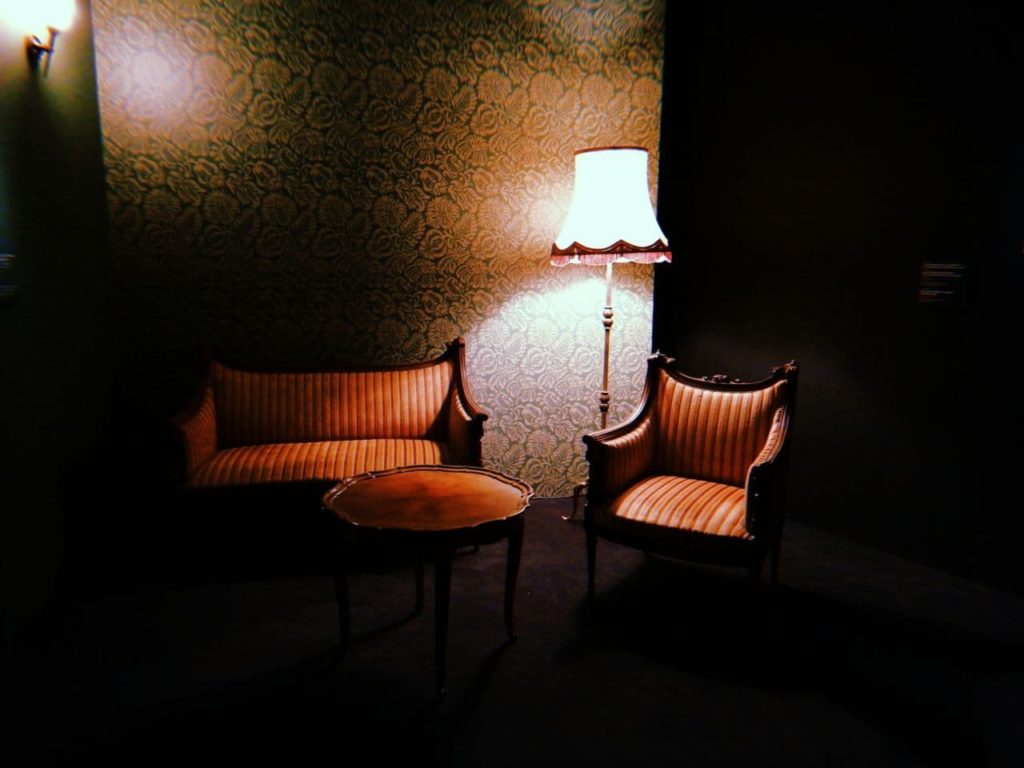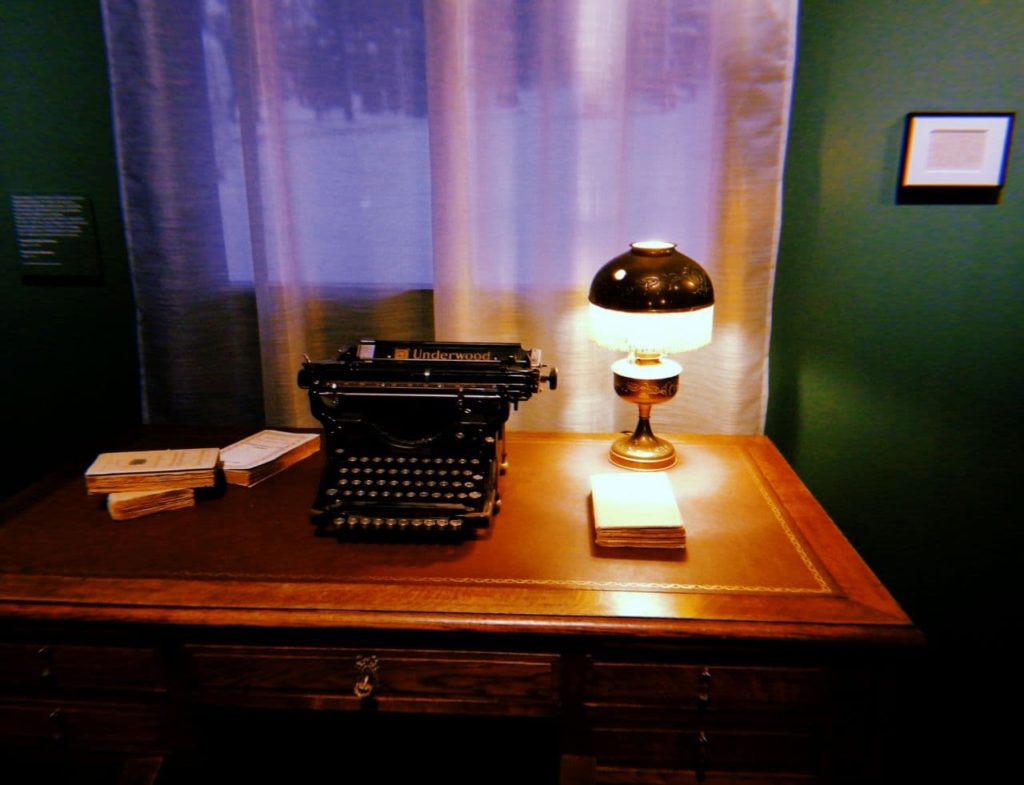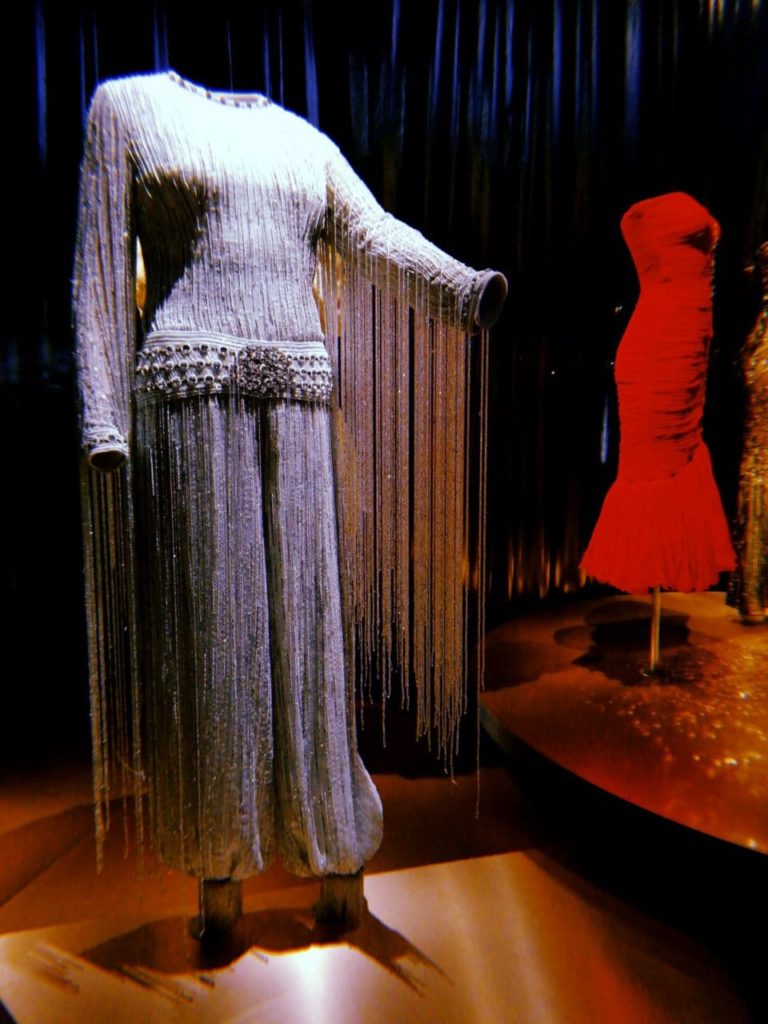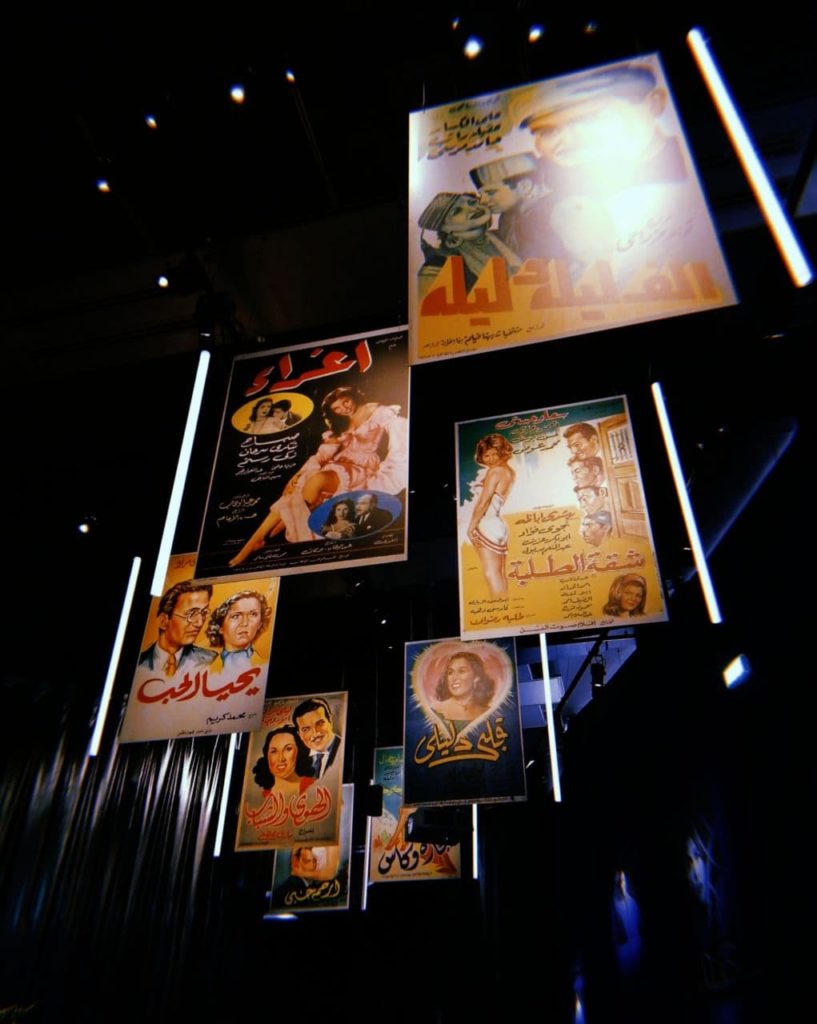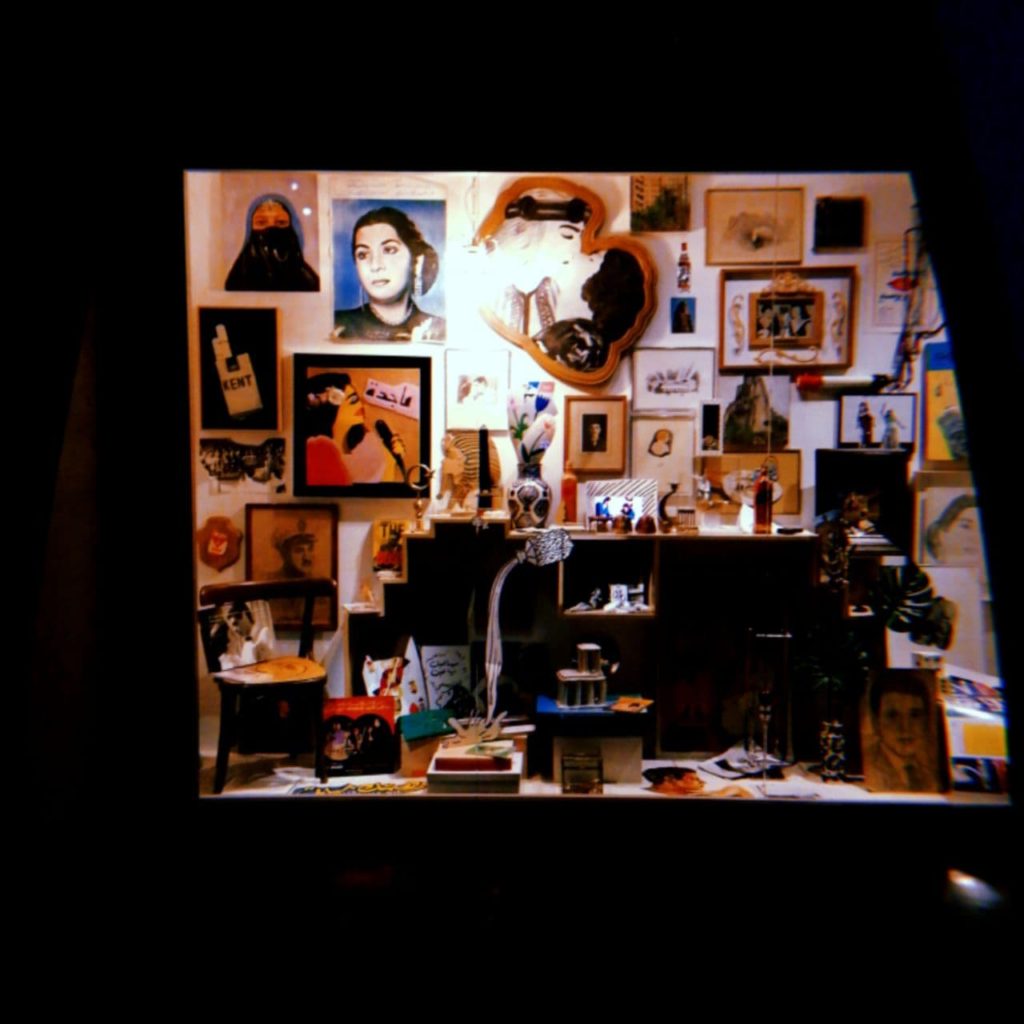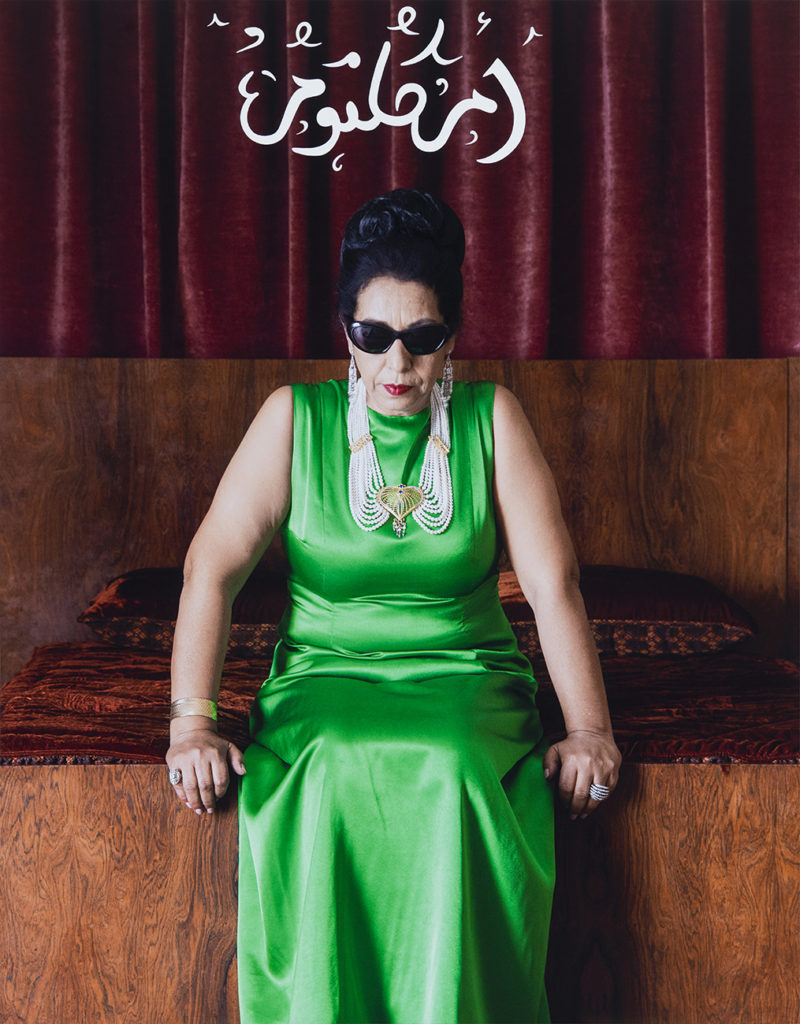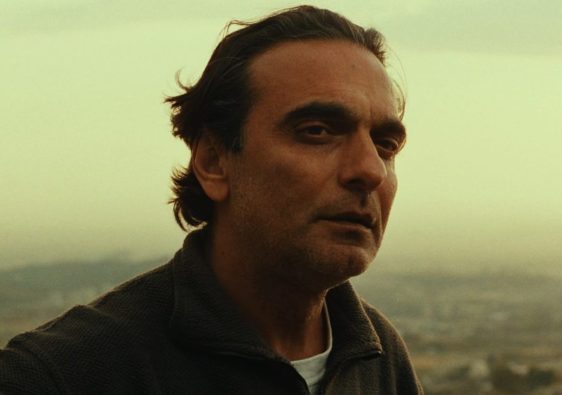How to define a diva ? The diva embodies an ambiguous personality, sometimes venerated and admired for her presence and artistic genius, sometimes criticized for her demanding nature. At the Institut du monde arabe in Paris, the new exhibition Divas. From Umm Kulthum to Dalida exposes the brilliant, scandalous, poetic and sometimes tragic careers of these Arab divas, icons of the 20th century. Let’s dive into the sparkling and tumultuous world of these women…
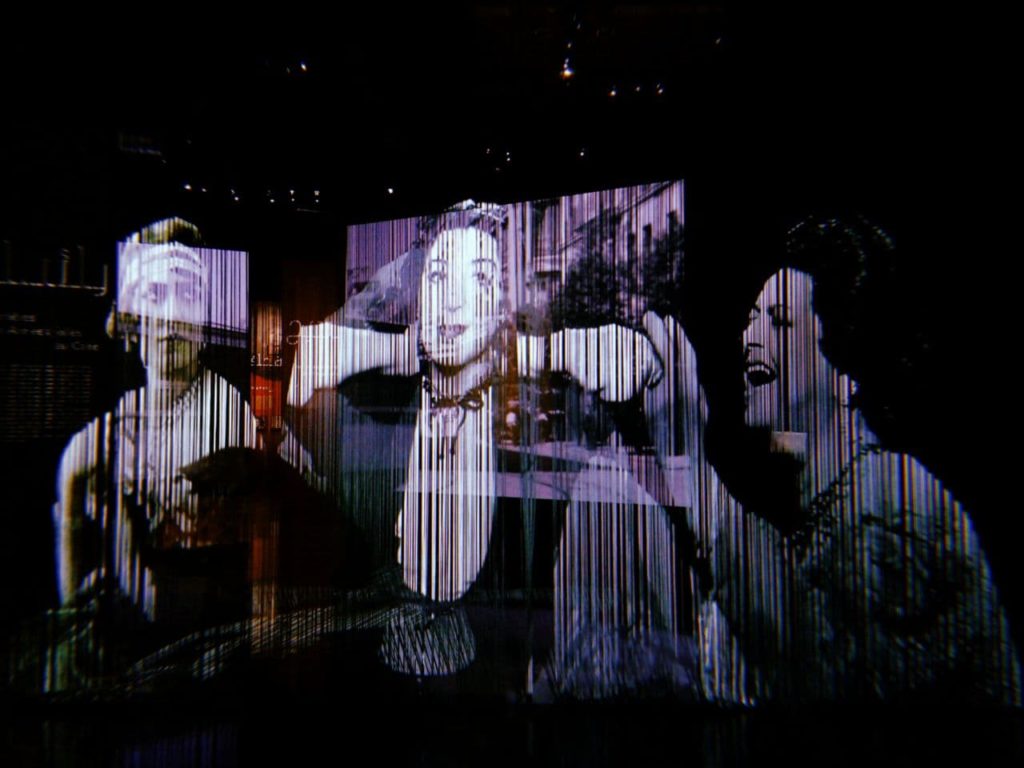
FROM BEGINNINGS…
The exhibition opens with a presentation of the intellectual and artistic upheaval of the Arab world in the 1920s, which went hand in hand with a political and societal revival known as the Nahda, or intellectual renaissance, which flourished particularly in Egypt. Cairo was at the heart of this cosmopolitan effervescence, and was the anchor of a new spirit of freedom and demands ; literary and artistic gatherings as well as movie theaters, concert halls, and cabarets flourished.
In this context, the place of women in society is questioned, and the struggle for their emancipation becomes a motor of creativity. These pioneers are indeed at the origin of the emergence of new artistic practices, and it is them who allow the advent of divas in the 40s, then recognized and admired by both male and female audiences.
Among these avant-garde women, Ceza Nabarawi (1897-1985) became the editor-in-chief of the feminist and artistic magazine L’Égyptienne, and founded with Hoda Shaarawi (1879-1947) the Egyptian Feminist Union for the defense of women’s rights in 1923.
The exhibition’s scenography and the reconstitution of sets immerse us in the subdued environment of these literary salons and of the first movie theaters, while photographs of the time let us imagine the atmosphere of these new places of singing and dancing that were casinos, like the famous Casino Badia founded by Badia Massabni (1892-1974) in the heart of Cairo.
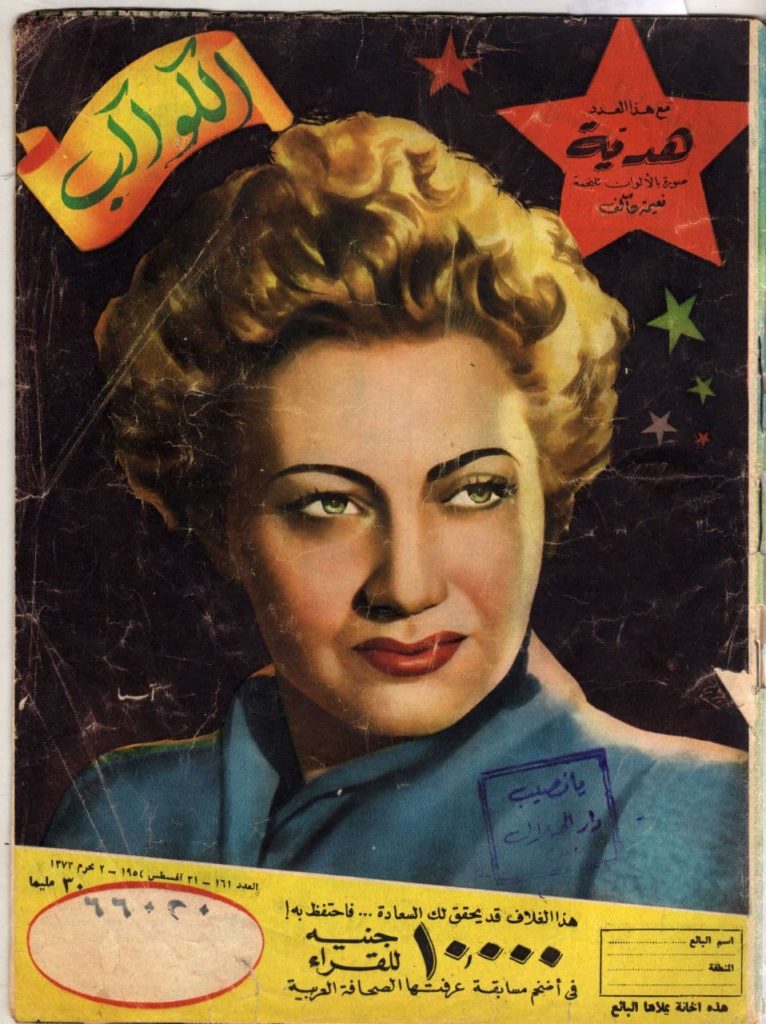
ZOOM ON… the actress and producer Assia Dagher (1908-1986). Born Lebanese and naturalized Egyptian, she is a true pioneer of Egyptian cinema. After creating in 1929 the first film production company of the country, Lotus Films, she produced a dozen films, such as « Look for the women » (1939) in which she plays, « Ruda Kalbi » (1957), the first Egyptian film in color and CinemaScope, or the famous « Saladin » by Youssef Chahine, released in 1963. She also offered great roles to the actress Faten Hamama (1931-2015), star of Egyptian cinema in the 50s and 70s, and discovered the future diva Sabah.
…TO THE SHOW !
The visitor then moves forward to discover the « golden age » of divas, from the 1940s to the 1970s, with the presentation of the four great icons of Arab music and cinema : Umm Kulthum, known as the Star of the East, Warda, Asmahan and Fairuz. The music industry was then in full swing, helped by the Egyptian radio which broadcast their songs throughout the Arab world. As ambassadors of the Arab identity, and despite their different backgrounds and origins, they embody freedom, love, melancholy or exile, and lead their audience to tarab, musical ecstasy.

In the course of the exhibition, each has a private loge dominated by a specific color that transcribes the universe, personality and aura of the diva. These loges reveal the power of each, but also their intimacy, and we discover photographs, posters or musical excerpts illustrating the great moments of their careers, as well as ornaments, dresses or personal objects of these women.
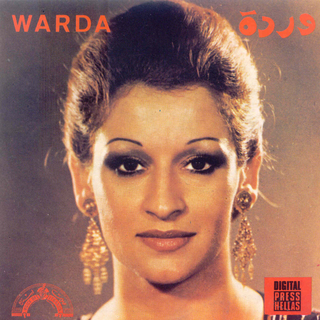
ZOOM ON… the singer Warda (1939-2012). In a loge tinted purple, a color evoking dream but also melancholy, vinyl sleeves and portraits of the divine Warda, at the beach or on stage with his musicians, are exposed. Born in Paris in 1939 to a Lebanese mother and an Algerian father, Warda El Djazairia (the Algerian rose) began her career at the age of nine in the oriental cabaret of her father.
From her beginnings, Warda expresses through her songs her political commitment to Algerian independence, a commitment that forced her family into exile in 1956. Later settled in Egypt, the beauty of her voice, the accuracy of her intonation, her sense of rhythm and the sounds from the Maghreb that she integrates into her songs quickly give her the status of diva.
• • •

ZOOM ON… the mythical Asmahan (1912-1944). Asmahan, diva with a tragic destiny, perfectly embodies the freedom and the desire to live intensely in spite of constraints, be they family, love or political, two sentiments dear to divas. Her real name is Amal Al-Atrash and she was born to a Lebanese mother and a Syrian father, a prince attached to the Druze clan of Al-Atrash.
Singer with a voice similar to a bird’s song, but also actress alongside her brother, the great oud player and actor Farid al-Atrash, the princess rebelled during her short life against all the obligations that surrounded her. When the car carrying her fell into the water in 1944, causing her death, all the hypotheses were put forward and the mystery remained – a simple car accident ? an assassination organized by an enemy, by a member of her family, by the wife of one of her many lovers, or even by Umm Kulthum, her great rival…? The myth around Asmahan is still very much alive.
Then, it is the performance and the magnetism of the night that are offered to us ! In a dark room with shiny curtains, the visitor is on one side dazzled by a parade of sparkling dresses, on the other side amazed by a starry ceiling strewn with colorful posters of films in which the singers, actresses and dancers shine.
It is the whole boom of cinema that is shown to us ; Egypt, which becomes the fourth largest producer of films in the world, is once again at the heart of this artistic effervescence, and is named Nilwood, Hollywood on the Nile. This industry saw the emergence of film icons of the time such as Hind Rostom (1926-2011), the Marilyn of the East, and singers and dancers also became actresses in musicals, such as Layla Mourad (1918-1995).
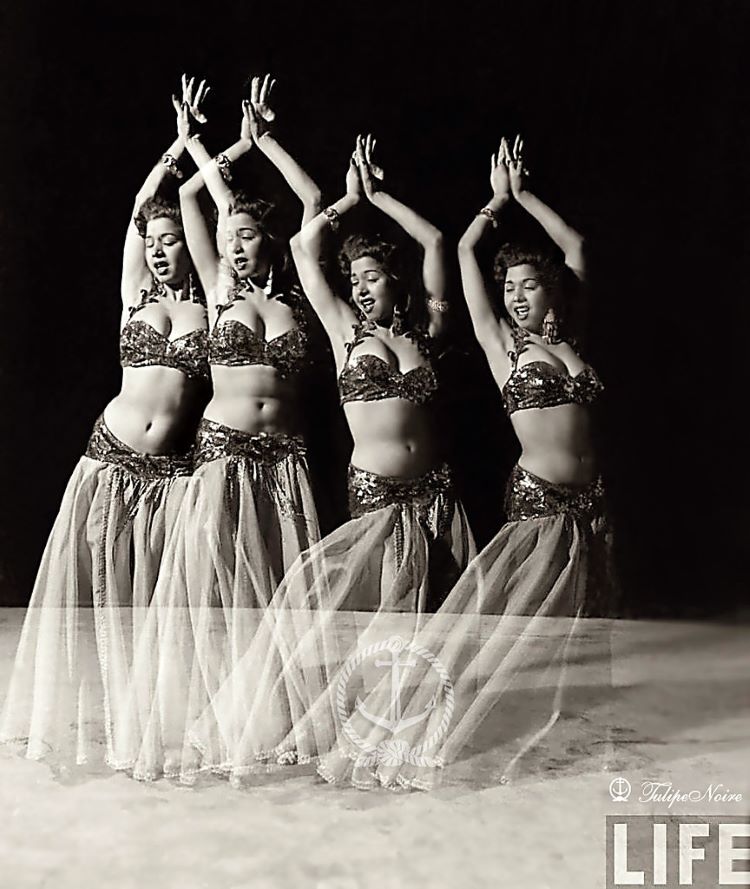
Among these brilliant figures, some dominate the spotlight – like the two Egyptian legends of oriental dance, Samia Gamal (1924-1994) and Tahia Carioca (1919-1999), who popularized this slow and sensual dance in the cinema. Each with their own style, they introduced innovative elements for the time, such as ballet or samba steps – then called carioca – but also accessories, such as heels and scarves.
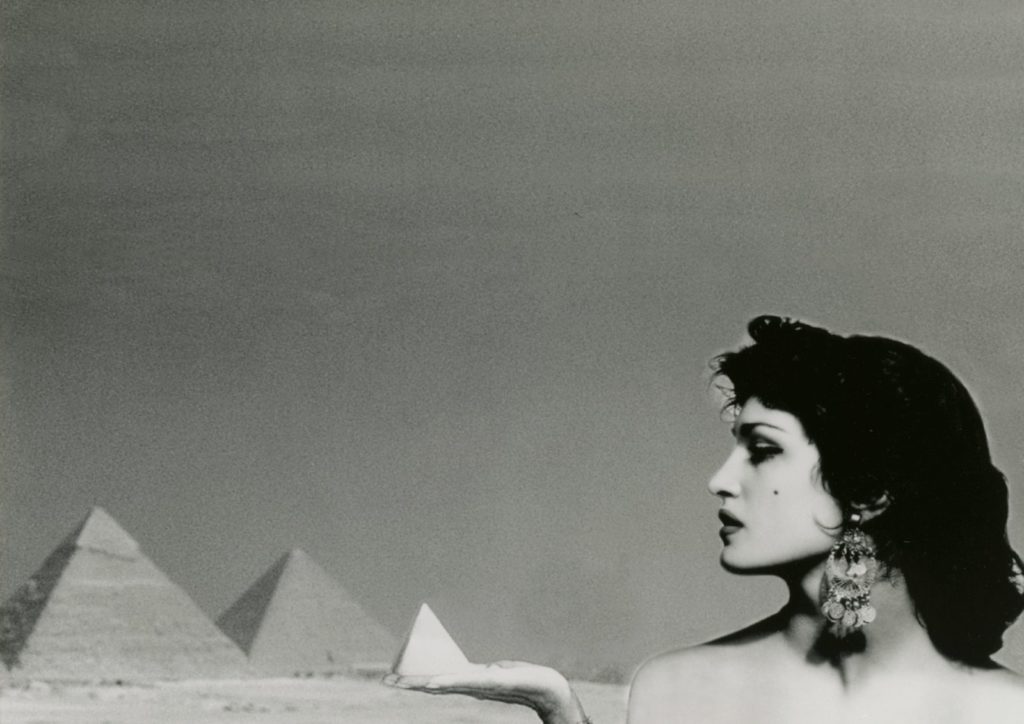
Two other icons triumph in singing : the famous Lebanese singer with 3500 songs and fancy dresses Sabah (1927-2014), who contributes to the influence of Lebanese music throughout the world, as well as the masterful Dalida (1933-1987), born in Cairo and whose career was launched by the cinema, who recorded among her greatest triumphs « Salama ya Salama » and « Helwa Ya Baladi« , two titles sung in Arabic with resounding success.
CONTEMPORARY LEGACY OF THE DIVAS
The influence of the divas has no temporal or geographical limits ; their presence, their personalities and their role in the development of Arab culture has crossed borders and still profoundly marks the minds and arts of today. The last part of the exhibition immerses us in the worlds of contemporary artists from all walks of life, whose works are imbued with the aura and aesthetics of the divas.
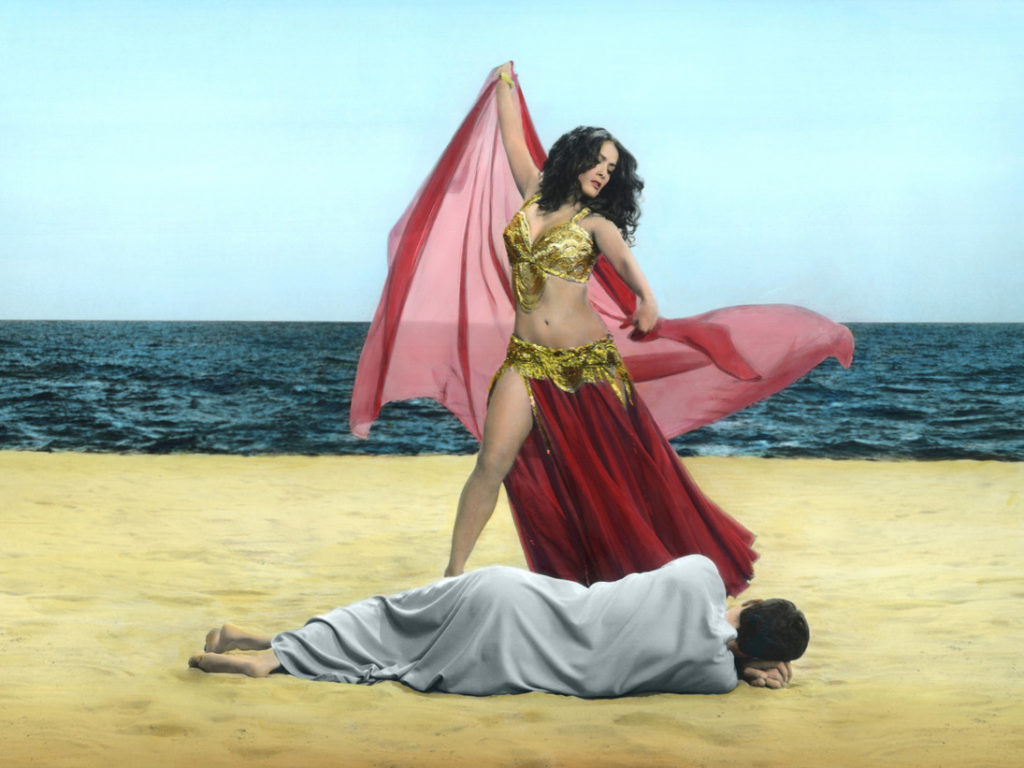
Thus, a large part of the work of the Egyptian photographic artist Youssef Nabil (born in 1972 in Cairo) shows a real nostalgia for the golden age and the stars of the Egyptian cinema of yesteryear, with his analog photographs with faded colors and their orientalist aesthetic assumed.
This is notably the case with his video project entitled « I saved my belly dancer« , created in 2015 and presented in an almost confidential room of the exhibition, in which the visitor discovers for twelve minutes the seductive Lebanese-Mexican actress Salma Hayek as a belly dancer, undulating sensually in front of the French-Algerian actor Tahar Rahim.

The legacy of the divas also extends beyond the Arab world, and is expressed, for example, through the work of Iranian visual artist Shirin Neshat (born 1957 in Qazvin). In 2017, she directed the film « Looking For Umm Kulthum » – from which the exhibition poster is taken – as a tribute to the woman known as the Fourth Pyramid, whose fascination around the world continues unabated.
The French-Lebanese artist and illustrator Lamia Ziadé (born 1968 in Beirut) has also created a fabulous installation especially for the exhibition. Based on her magnificent book Ô nuit Ô mes yeux, published in 2015 and which mixes texts and images reviving the golden age of divas, she creates here a three-dimensional version, a real cabinet of curiosity where vinyls, paintings, drawings and objects intertwine their colors in a tribute to divas.
The journey into the breathtaking world of divas ends with the musical project Love & revenge, created by La Mirza and Rayess Bek. As a hybrid project remixing the great songs of Arabic music, set to images of films from the golden age of Egyptian cinema, Love & Revenge creates both audio and video concerts. Here, the group has also implemented a hologram of Samia Gamal sketching vaporous dance steps, giving this last room a breath of nostalgia.
OUR « DIVA » PLAYLIST
Click on the image to access it !
To discover more about these timeless legends and their stories, don’t hesitate to visit the exhibition at the Institut du monde arabe in Paris !
From May 19th 2021 to September 26th 2021
More info by clicking here
Thank you to the Institut du monde araebe for inviting us to preview the exhibition !

Photo credits
All photographs in this article are taken by © Cosmic Mektoob, except :
• Article cover image : photographic series « Looking for Umm Kulthum« , 2019. © Shirin Neshat
• Booklet for the film « Look for the women » with Assia Dagher. © Abboudi Bou Jawde
• Cover of the album « Warda » by Warda El Djazairia.
• Photograph of Samia Gamal for LIFE magazine, during her American tour organized by her husband Sheppard King in 1952. © Loomis Dean
• Photomontage of Dalida from an original photograph of 1986, with insertion of a portrait taken in 1954. Photographic montage made by Orlando, 1997. © Orlando Productions
• Image from the video « I saved my belly dancer« . © Youssef Nabil

